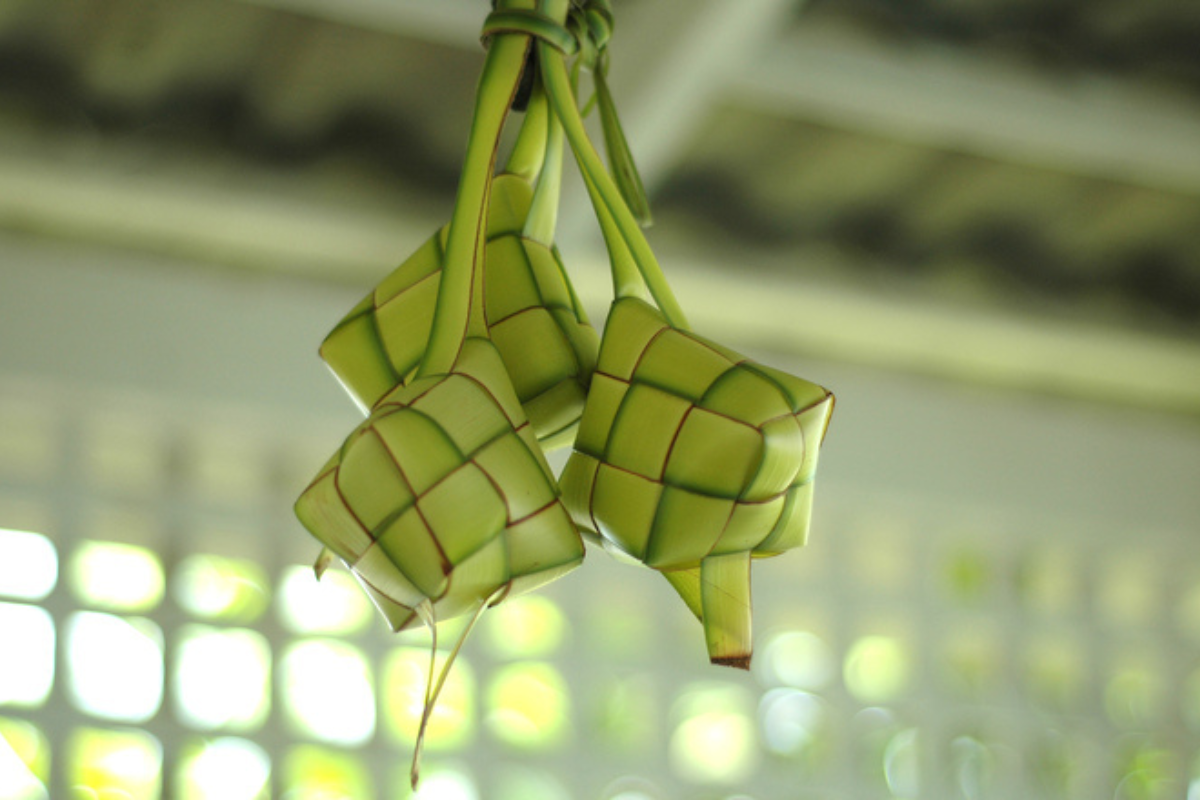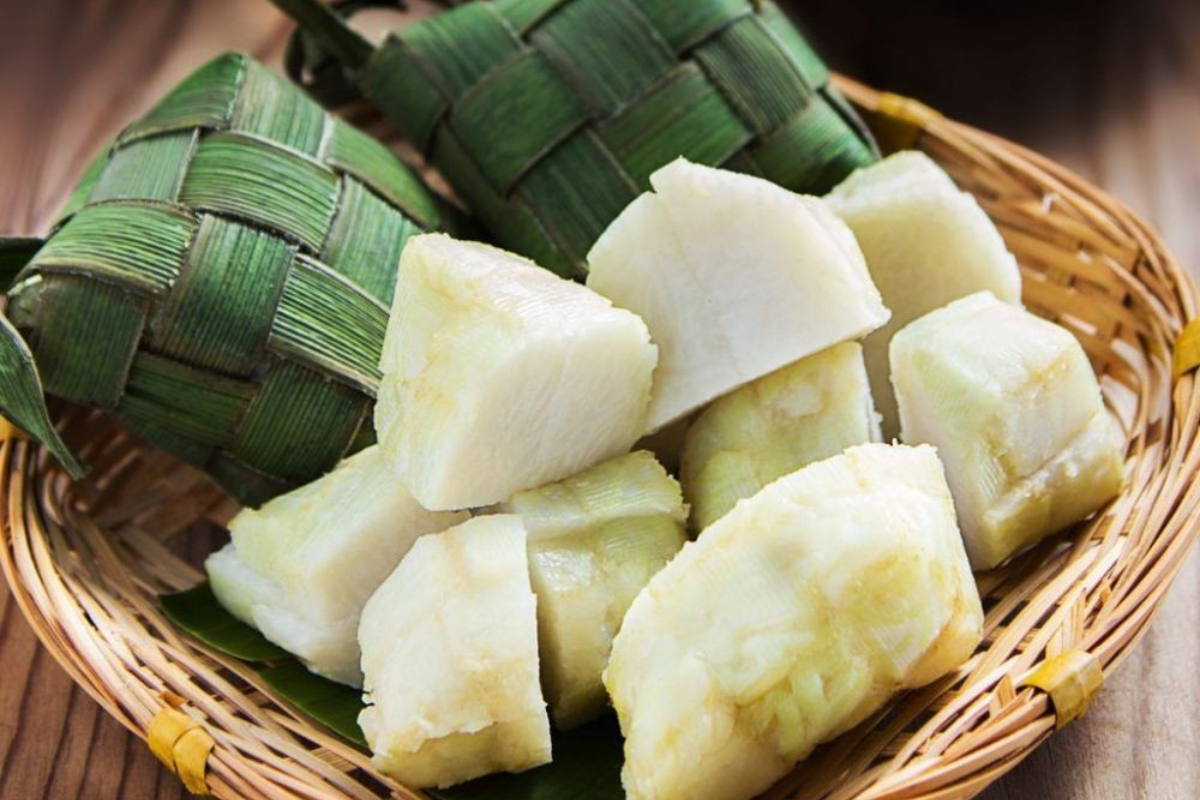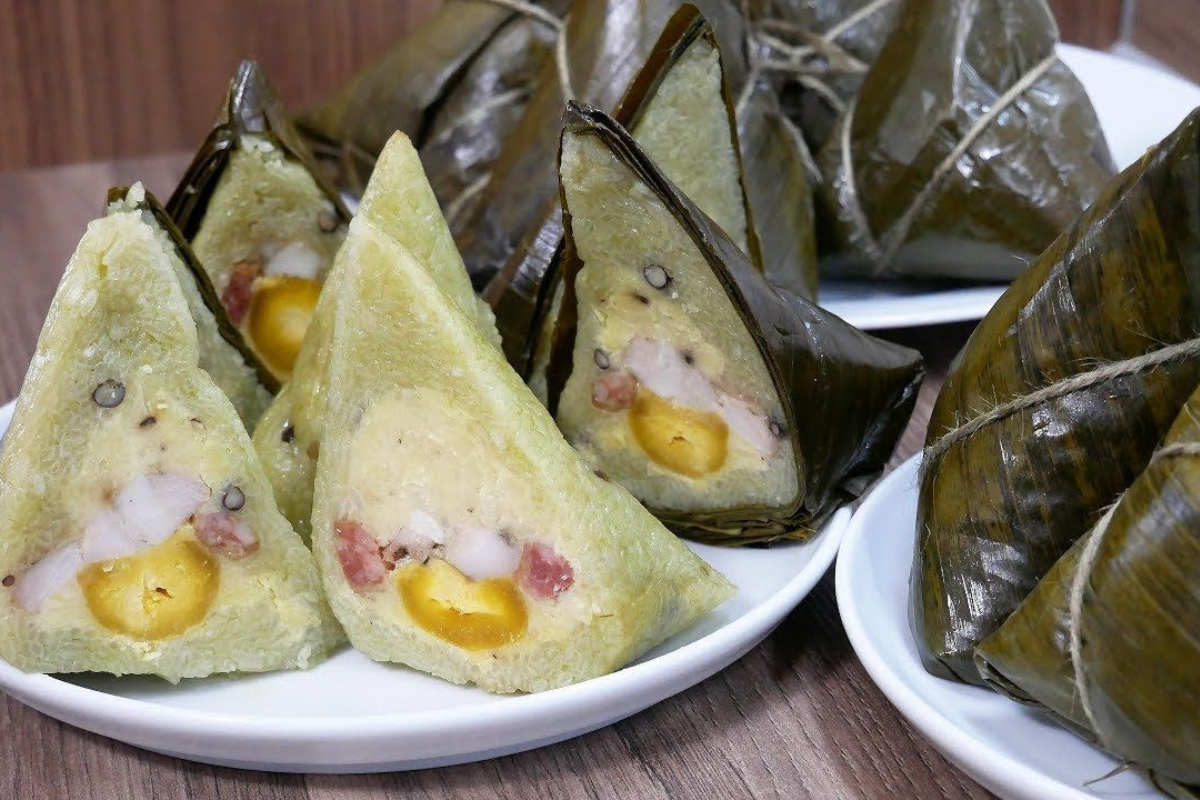In nations in Southeast Asia, rice is said to be the staple diet. As a result, many countries including Indonesia, Brunei, Singapore, the Philippines, and Malaysia, consider rice cakes to be an integral part of cuisine. Ketupat is not an exception. In addition to regional specialties like Vietnamese sticky rice cake, Korean Tteokbokki, Japanese mochi, Malaysian Ketupat is distinct and reflects the culture of this nation.
Both aristocracy and ordinary individuals may eat Ketupat since it is a national dish that is valued by everybody. When you visit Malaysia, you will witness underprivileged people purchasing this rustic cake from street sellers directly on the pavement, accompanied by a skewer of grilled pork. Workplace employees, in the meantime, purchase Ketupat cakes from specialty stores, then chop the cakes into little pieces to consume with the meal they bring. Rice cakes are served with delectable rice that is elegantly arranged on a platter among several other foods during affluent people’s dinners.

Ketupat can be prepared differently based on the kind of rice. Ketupat Nasi and Ketupat Pulut, however, are the two most popular varieties. Ketupat Nasi is a simple rice dish that is shaped like a square and wrapped in coconut leaves. In contrast, ketupat pulut, which is composed of sticky rice, is often wrapped in a triangular shape using the leaves of the licuala palm. Ketupat is a thrifty supper that is typically consumed at midday, sometimes served as a side dish of rice with other foods such as dry beef curry rendang, or grilled pork sate.
Indonesian coastal dwellers invented ketupat, a dish made from rice and coconut leaves available over the island, to sustain them on lengthy sea journeys. Ketupat can be hung up for a long time since it is carefully wrapped in square or triangle forms made of coconut leaves. You may have convenient rice cakes for breakfast, as a quick snack, or to stave off hunger at night. The wonderful taste of the rice cake may be preserved for an extended period.
Ketupat is a sign of blessings and apology. In Malaysian religion, the leaves stand for conscience, and rice for human desires. Individuals need to be able to use their conscience to restrain their impulses. Although ketupat is a typical Malaysian dish, it may also be enjoyed with soy sauce and chicken curry during Indonesia’s Idul Fitri celebration. More unusually, to enhance flavor stimulation, ketupat is occasionally cooked with coconut milk and a few spices. Filipinos prefer ketupat as a quick and easy meal option.

Another special made-from-rice cake resembling Ketupat: Vietnamese alkaline rice dumpling
In Vietnamese cuisine, the pyramidal glutinous rice cake is a rather distinctive kind. There are two varieties, and each of them has a very distinct significance and function apart from having a unique shape. During the Doan Ngo festival, a sort of pyramidal glutinous rice cake, also called Vietnamese alkaline rice dumpling, is a highly popular cake with a slightly elevated cone form that is used for devotion. Usually, this cake is wrapped tightly and fastened with strings. Usually golden in color, the crust holds a filling of sweet beans. As the cake has been soaked in ash, the crust has a distinctively crunchy sense. This cake is quite hard to get during the regular days; nevertheless, it is manufactured or sold in large quantities in Saigon and the Central and Northern areas for the days during the Doan Ngo festival. Vietnamese alkaline rice dumplings are always more symbolic of spirituality than of materiality.
The popular meat-filled dumplings seen in the South are another kind. It is regarded as a basic kind of Banh Chung or Banh Tet, wrapped in sticky rice, pork fat, green beans, red beans, and duck eggs. Rather than being offered, meat-filled dumplings are utilized on a regular basis as a way to introduce Southerners to new tastes due to the fact that they are frequently packed in huge portions and include healthy components. Banana leaf wraps around meat-filled dumplings that are often rich in color and nutrition, reflecting the rich agricultural soil of the South.
Therefore, whether Ketupat or the pyramidal glutinous rice cake, the main ingredient of Southeast Asian cuisine is rice. It can be said that the rice cakes of those countries partly reflect the quintessence of wet rice agricultural civilization and the important role of rice grains in the spiritual life of the residents.


